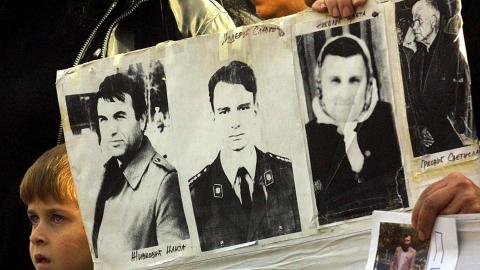Families Lose Hope of Finding Kosovo’s Missing Serbs

Andrija Tomanovic, the head of the surgery clinic at the Clinical Hospital Centre in Pristina, called his daughter Jelena on June 24, 1999 at around 1pm to tell her he was on his way home from work.
The Kosovo war had officially been ended by the Kumanovo Agreement on June 9 that year. The NATO bombing of Yugoslavia had stopped, Belgrade's army and police forces had withdrawn from Kosovo to Serbia, and the UN's Interim Administration Mission, UNMIK, and the NATO-led Kosovo Force, KFOR, had been deployed to deal with security.
One of KFOR's checkpoints was in front of the Pristina Clinical Hospital Centre on June 24 when Tomanovic was seen for the last time.
Twenty years later, on August 30, the International Day of the Disappeared, the Serb doctor is still listed as a missing person.
According to Kosovo government's Commission on Missing Persons, there are still 1,650 people missing as a consequence of the 1998-99 war. Of these, 1,100 are ethnic Albanians, 360 are Serbs and 200 are from other minority communities, such as Roma.
The majority of Serb and non-Albanian civilians who went missing in Kosovo disappeared between June 1999 and December 2000, after the war ended and Slobodan MIlosevic's forces pulled out.
Just after the war ended, many Serbs and Roma were targeted by armed groups, and thousands fled Kosovo, fearing revenge attacks, according to a report by Amnesty International.
As well as dealing with security issues in the chaotic post-war period, UNMIK was responsible for probing the disappearances - but Tomanovic's case is one of more than 200 in which the UN mission has been accused of not conducting adequate investigations.
Absence of witness statements
A Kosovo Albanian man...
- Log in to post comments










